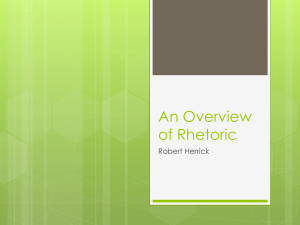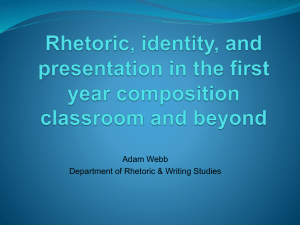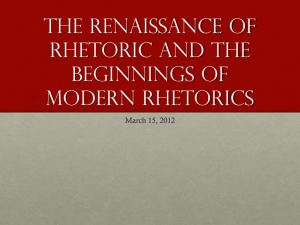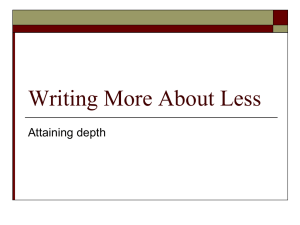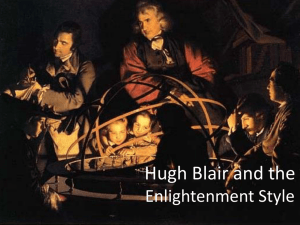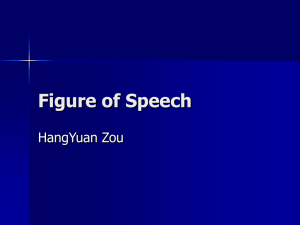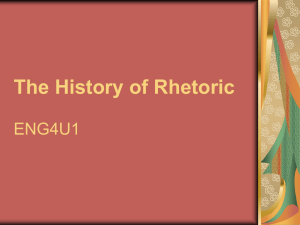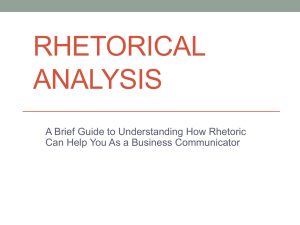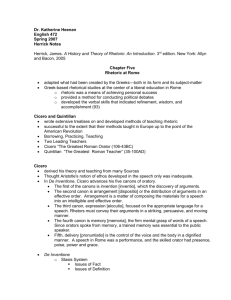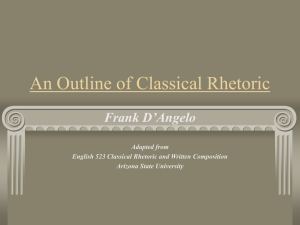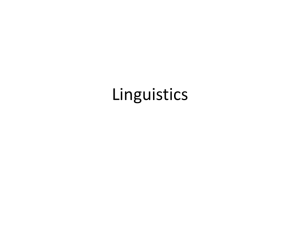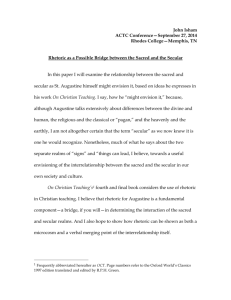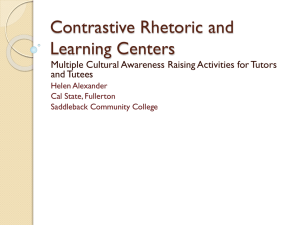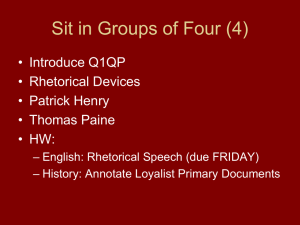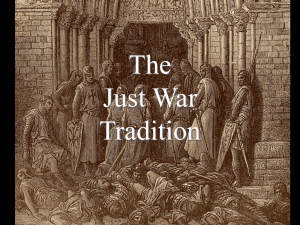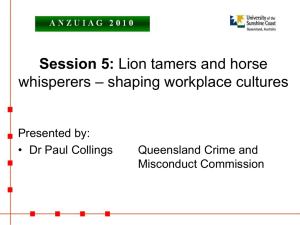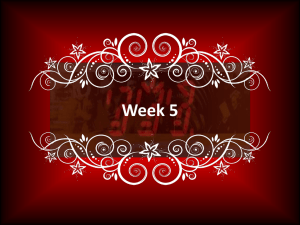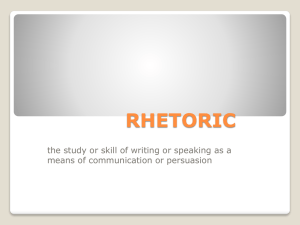The Fall of Rome and the Rise of Christianity
advertisement
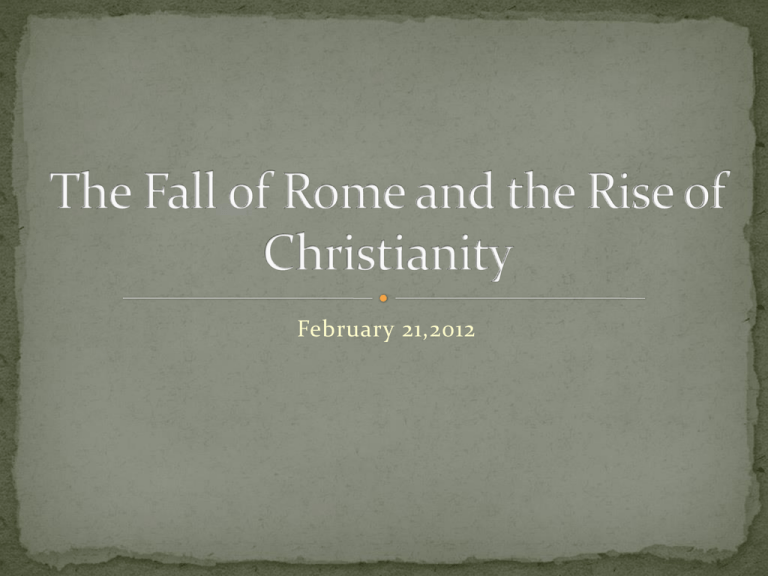
February 21,2012 The period of the Dictators/Caesars: Augustus, Tiberius, leading to civil wars and internal strife The period of the Dictators/Caesars: Augustus, Tiberius, leading to civil wars and internal strife The gradual abolition of democratic bodies or stripping them of power— “once democratic procedures were eliminated, rhetoric decayed” (137) The period of the Dictators/Caesars: Augustus, Tiberius, leading to civil wars and internal strife The gradual abolition of democratic bodies or stripping them of power— “once democratic procedures were eliminated, rhetoric decayed” (137) The growing influence of Christianity The influence of knowledge gained from Greek orators continues during this period (via esp. Cicero and Quintilian) These orators were “often granted immunities and given honorary chairs” by emperors such as Vespasian (125); and Caligula (138) The most famous speakers were “cultural conservatives and pagans” (125) Limited to epideictic and forensic rhetoric, but little need for deliberative rhetoric Emphasis on preaching, especially aiming at conversion Attempts at fusing Christian theology with Platonic philosophy Despite this, the ascension of Christianity caused a decline in the teaching of rhetoric; rhetoric is viewed with skepticism Called for joining the use of hermeneutics (interpretation of Scripture) and rhetoric Altering the classical tradition, argued that the message was more important than the speaker Argued for a correlation between eloquence and position, education and authority—in other words, ethos transcends rhetorical skill “Augustine’s love for Cicero and for language motivated [Augustine’s] brilliant rescue of rhetoric from its condemnation as a product of paganism [ie. The Greeks]” “Augustine’s reconstruction of Cicero involved designing rhetoric for Christian, rather than civil, uses” Substituted deliberative, epideictic, forensic forms for a single genre: preaching (148) Cicero’s three styles used for particular audiences: 1) The grand style to fascinate and please (and convince) nonbelievers; 2) The middle style to appeal to the will to condemn or praise 3) The plain style was used to instruct or prove Via the neoplatonists, Augustine learned to “seek for a truth that was incorporeal”—in other words, to look, like Plato did, to the noumenal world as the source for Truth However, Augustine ultimately dismissed the neoplatonists as mere “rhetoricians who lived for applause”( 149) Augustine’s reading of Plato lead him to seek rhetoric “to dispel the illusions of this world and clarify the meaning of God” (149) –Plato probably wouldn’t have been happy to hear that But to dispel illusions, we would need to read and interpret Scripture carefully and accurately! Hence, his desire to cultivate hermeneutics: the art of Biblical interpretation This also leads to his emphasis on semiotics (the study of signs) and grammar All of these skills are aiming to “dispel illusion” and uncover Truth: GOD. Due, in part, to Augustine’s belief in a noumenal world, he sees that such a universal Truth “establishes universal standards that are not altered on the basis of such attributes as taste, race, or belief…” (151) Think of what the author of Dissoi Logoi would say to that! Augustine used Biblical writings as his examples for rhetorical theory, with Jesus as his ideal orator: Extemporaneous preaching Aimed to make the unclear clear An implied division of audiences: Those with faith Those who don’t share Jesus’ vision; dialectical discourse used The multitudes, who are taught through the use of parables Children, who need no preaching The Fall of Rome and the Rise of Christianity The Scholastics Forward-looking Emphasized logic (esp. the syllogism) Generally, neoplatonic Generally, placed rhetoric beneath logic, thus reducing its importance Aimed for clear, unambiguous language The Humanists Focus on the past— retrieved ancient scholars to inform the present, including the ancient rhetoricians Saw value in rhetoric Boethius Cassiodorus Senator Averroes Alcuin Notker Labeo Roger Bacon Boethius Sulpitius Victor John Scotus Isidore, the Archbishop of Seville Averroes Hugh of St. Victor Thomas Aquinas Roger Bacon The art of letter writing, originating with Roman rhetoric is taken up by Christian church A systematized way of composing a letter that emphasized ethos to establish goodwill and credibility in a reader This also emphasized and spread the teaching of the art of written, rather than spoken, rhetoric February 21,2012



